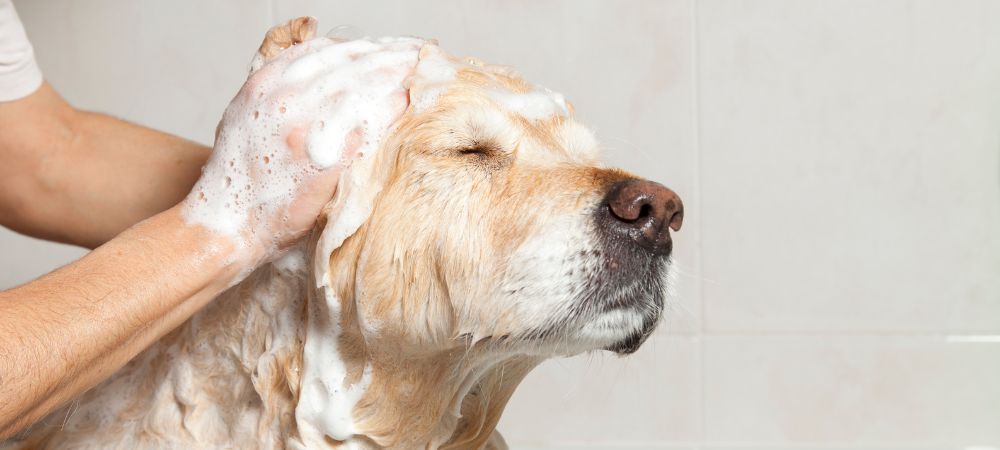As the leaves change and temperatures cool, fall brings various environmental changes that can trigger dog allergies. Like humans, dogs can develop seasonal allergies, often manifest through discomfort, skin irritations, and other symptoms. Understanding the causes and recognizing the signs are crucial for helping your furry companion enjoy this beautiful season comfortably. Thankfully, natural remedies can provide relief without harmful side effects.
In this guide, we’ll explore the symptoms, causes, and natural solutions to help manage fall allergies in dogs effectively.

Fall allergies in dogs primarily affect their skin, ears, and respiratory system. The symptoms can range from mild to severe, depending on your dog’s sensitivity and exposure levels. Common signs include:
If you observe any of these symptoms, it’s essential to identify the root cause and take steps to naturally alleviate your dog’s discomfort.
Environmental factors usually cause fall allergies in dogs. The most common triggers include:
As dogs are closer to the ground, they are more likely to come into contact with these allergens through their paws, fur, and noses.
While allergies can be challenging, natural remedies can provide safe and lasting relief. Below are some proven methods to help ease your dog’s symptoms naturally.

Bathing your dog helps remove allergens like pollen, mold, and dust from their fur and skin. Use a natural, hypoallergenic shampoo containing ingredients like oatmeal or aloe vera. These ingredients soothe the skin, reduce inflammation, and prevent itching. Aim to bathe your dog once a week or after exposure to outdoor allergens.
After walks or playtime outside, wipe down your dog’s paws, belly, and fur with a damp cloth. This helps remove pollen and other allergens that may cling to their coat.
Moreover, you can also rinse your dog’s paws and soak them for 10–15 minutes in a mixture of water and 1–2 tablespoons of apple cider vinegar (ensure it is well-diluted) or cooled chamomile tea. This helps remove allergens like pollen or mold, soothes irritation, and reduces their impact on your dog’s health.
Simple practices like these can prevent excessive itching and licking caused by allergen exposure.
Nutrition plays a critical role in managing fall allergies. Anti-inflammatory foods in well-balanced dog meals can help strengthen your dog’s immune system and reduce allergic reactions. Consider incorporating the following natural ingredients:
Switching to a fresh, natural diet ensures your dog gets high-quality nutrients free from artificial additives or allergens often found in processed foods. Thoughtfully feeding dogs with allergies can make a huge difference.
Strengthening your dog’s immune system can help them fight off allergens more effectively. Natural supplements like probiotics and herbal remedies can play a vital role:
Coconut oil is a natural moisturizer that helps soothe dry, irritated skin. You can apply a small amount to areas of redness or inflammation to provide relief. Coconut oil also has antibacterial and antifungal properties, effectively addressing skin infections caused by scratching.
During fall, dogs often spend more time indoors, where allergens like dust mites and mold can accumulate. To create an allergy-friendly environment:

Diet is a powerful tool for managing fall allergies in dogs. Fresh, natural food supports your dog’s immune system, promotes gut health, and reduces inflammation. Unlike processed kibble, which often contains allergens, fillers, and artificial additives, fresh food provides whole ingredients that nourish your dog from the inside out.
High-quality, fresh meals contain:
Conclusion: Help Your Dog Thrive This Fall
Fall allergies can be uncomfortable for dogs, but with the right natural treatments, you can provide relief and improve their quality of life. Fresh, natural food is a cornerstone of allergy management, helping to reduce inflammation, boost immunity, and address the root causes of allergic reactions.
Soluky’s fresh dog meals are crafted with high-quality, limited ingredients to meet your dog’s unique dietary needs. By choosing Soluky, you’re naturally giving your dog the gift of better health.
Take the first step toward a healthier, happier dog this fall. Shop fresh dog food from Soluky today and discover the power of natural nutrition.
Common symptoms are itchy skin, redness, hair loss, watery eyes, sneezing, ear infections, and frequent paw licking.
Bathe regularly with natural shampoo, wipe paws after walks, apply coconut oil to irritated skin, and add anti-inflammatory foods like salmon and pumpkin.
Bathe once a week with a natural, hypoallergenic shampoo to remove allergens and soothe the skin.
Yes, a natural diet reduces inflammation, strengthens immunity, and avoids allergens in processed food.
Vacuum often, wash bedding weekly, use air purifiers, and maintain low indoor humidity to prevent allergens.